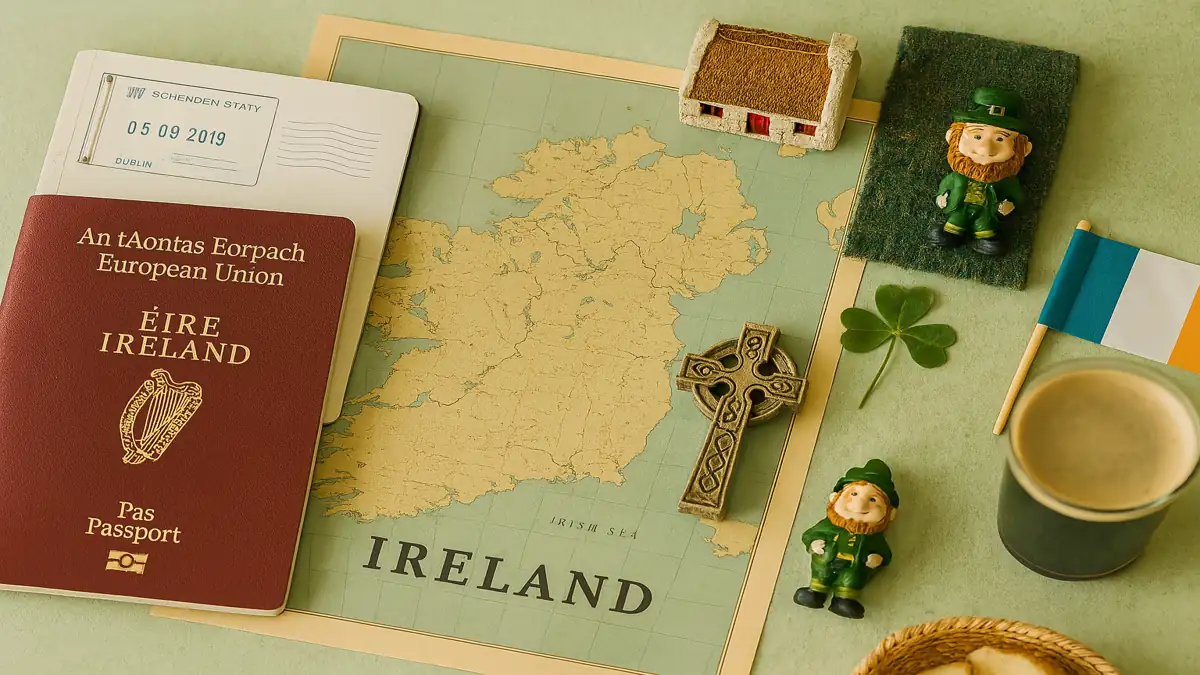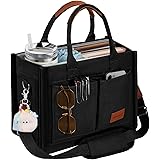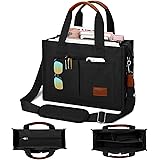Ireland Travel Guide 2025: The Ultimate Handbook for First-Time Visitors
Planning your first adventure to Ireland in 2025? You’ve picked an incredible destination! This ultimate guide is packed with everything you need to know to make your trip unforgettable. From navigating charming cobblestone streets to savoring delicious Guinness, we’ve got you covered.
Ireland, the legendary Emerald Isle, offers a unique blend of ancient history, vibrant modern culture, breathtaking landscapes, and a warmth of welcome that’s truly unmatched. It’s a country that captivates every traveler, whether you’re exploring medieval castles, hiking dramatic coastal paths, or simply enjoying the craic in a cozy pub.
Get ready to discover why Ireland is quickly becoming one of Europe’s most beloved travel destinations. Let’s dive into the essential tips that will help you plan, budget, and experience the very best of this amazing country.
Table of Contents
- 1. Why Visit Ireland in 2025?
- 2. Best Time to Visit Ireland
- 3. Top Destinations in Ireland for First-Timers
- 4. Planning Your Ireland Trip: A Step-by-Step Guide
- 5. Accommodation in Ireland: Where to Stay
- 6. Getting Around Ireland: Transportation Guide
- 7. How Much Does a Trip to Ireland Cost?
- 8. Must-Try Foods and Cultural Delights
- 9. Staying Safe in Ireland
- 10. Solo Travel in Ireland
- 11. Traveling Ireland with Family or as a Senior
- 12. Digital Nomads in Ireland
- 13. Essential Packing List in our Ireland Travel Guide
- 14. FAQs for First-Timers
- 15. What’s Next? More Guides to Explore
1. Why Visit Ireland in 2025?
Ireland is a land of captivating beauty and endless charm. In 2025, it continues to be a top choice for travelers seeking authentic experiences without breaking the bank. Its unique blend of ancient history and modern vibrancy makes it truly special.
The Allure of the Emerald Isle
Imagine exploring medieval castles that whisper tales of old, strolling through picturesque green landscapes, or listening to traditional music sessions in a lively pub. Ireland offers all this and more. The country boasts a welcoming atmosphere, delicious cuisine, and a rich cultural heritage that will leave you enchanted.
From the bustling streets of Dublin to the wild, untamed beauty of the Wild Atlantic Way, Ireland promises a journey filled with unforgettable moments. It’s a place where every turn in the road reveals a new vista, and every conversation feels like catching up with an old friend.
ETIAS Update for 2025
Good news for travelers! The European Travel Information and Authorization System (ETIAS) is still not required for U.S. and other visa-exempt travelers visiting the Schengen Area in 2025. Its implementation has been postponed to mid-2026. This means your entry to Ireland will be as straightforward as it has been in previous years.
2. Best Time to Visit Ireland
Choosing the right time to visit Ireland can significantly enhance your experience. The country is famous for its “four seasons in one day” weather, but each period offers unique charms and considerations.
Spring (March-May): Blooming Beauty
- Weather: Mild and fresh, with temperatures ranging from 8-15°C (46-59°F). Expect a mix of sunshine and light showers.
- Crowds: Fewer crowds than summer, especially in March and April.
- Pros: Landscapes are vibrant green, flowers are in bloom, and attractions are less busy. Perfect for hiking and enjoying nature. St. Patrick’s Day in March is a huge celebration. [5]
- Cons: Still quite cool, and the weather can be unpredictable.
Summer (June-August): Vibrant & Lively
- Weather: Warmest months, with temperatures averaging 15-20°C (59-68°F), sometimes higher. Long daylight hours, with sunsets as late as 10 PM.
- Crowds: Peak tourist season, meaning larger crowds at popular sites and higher prices for accommodation and flights.
- Pros: Best weather for outdoor activities, festivals, and enjoying the coast. Vibrant atmosphere in cities and towns.
- Cons: Can be crowded and more expensive. Booking well in advance is essential. [5]
Autumn (September-November): Golden Hues & Harvests
- Weather: Mild and crisp, with temperatures from 10-15°C (50-59°F) in early autumn, cooling down by November. Beautiful fall foliage.
- Crowds: Crowds begin to thin out, especially after September. Prices become more reasonable.
- Pros: Stunning autumnal colors, cozy pub atmosphere, and harvest festivals. Great for hiking and photography.
- Cons: Days get shorter, and rain becomes more frequent, especially in late autumn. [6]
Winter (December-February): Cozy & Festive
- Weather: Cold, with temperatures from 2-8°C (36-46°F). Expect rain, and occasional snow in higher elevations. Shorter daylight hours.
- Crowds: Fewest tourists (excluding Christmas and New Year). Lower prices for flights and accommodation. [1, 6]
- Pros: Festive Christmas markets, cozy pub fires, and a chance to experience Ireland’s quiet charm. Ideal for city breaks and cultural immersion. [6]
- Cons: Cold, wet, and many outdoor attractions might have reduced hours or be less enjoyable. [1]
Embracing the Irish Weather
No matter when you visit, be prepared for all types of weather. The Irish climate is famously changeable. Packing layers and a good waterproof jacket is always a smart move. Don’t let a little rain deter you; it’s part of the Emerald Isle’s charm!
3. Top Destinations in Ireland for First-Timers
Ireland is brimming with incredible places to explore. For your first trip, focus on these iconic destinations that offer a true taste of the country’s diverse appeal.
Dublin: The Vibrant Capital
Dublin is an absolute must-visit. It’s a city steeped in history, literature, and legendary craic (fun). Explore historic sites like Dublin Castle and St. Patrick’s Cathedral. Dive into the literary world at Trinity College’s Long Room and the Book of Kells. And, of course, no trip is complete without a visit to the Guinness Storehouse for a pint with panoramic city views.
The city’s pub culture is legendary, offering a warm welcome and live traditional music. Dublin is highly walkable, and its public transport system is efficient, making it easy to explore its diverse neighborhoods.]
Galway: The Cultural Heart of the West
Head west to Galway, a bohemian and artistic city known for its lively atmosphere, street performers, and traditional music. It’s often considered the gateway to the Wild Atlantic Way. Stroll through the Latin Quarter, visit the Spanish Arch, and enjoy fresh seafood.
Galway is an excellent base for exploring the rugged beauty of Connemara and the Aran Islands. Its smaller size makes it easy to navigate, and its friendly locals ensure a memorable experience.
Cliffs of Moher: Ireland’s Dramatic Edge
One of Ireland’s most iconic natural wonders, the Cliffs of Moher offer breathtaking views of the Atlantic Ocean. Standing over 200 meters (700 feet) high, these majestic cliffs stretch for 14 kilometers (9 miles). Visit the eco-friendly visitor center and walk along the designated paths for incredible photo opportunities.
The Cliffs are a popular day trip from Galway or Limerick, and their sheer scale and beauty are truly awe-inspiring. Be prepared for strong winds and changing weather conditions.
Ring of Kerry: A Scenic Drive
Located in County Kerry, the Ring of Kerry is a spectacular scenic drive (or cycle) that circles the Iveragh Peninsula. This 179-kilometer (111-mile) route offers stunning coastal views, charming villages, ancient forts, and lush landscapes. Highlights include Killarney National Park, Ladies View, and the Gap of Dunloe.
Allow a full day (or more) to explore the Ring of Kerry, stopping frequently to soak in the scenery. It’s best experienced by car, giving you the flexibility to explore at your own pace.
Belfast, Northern Ireland: History & Modernity (Cross-Border Considerations)
While technically part of the United Kingdom, Belfast is easily accessible from the Republic of Ireland and offers a fascinating glimpse into a different side of Irish history. Visit the Titanic Belfast museum, explore the political murals, and stroll through the vibrant Cathedral Quarter.
Remember that Northern Ireland uses the British Pound (£) as its currency. Border crossings are seamless, but be aware of the different political and cultural nuances. [7]
Cork: The Rebel City & Southern Charms
Cork, Ireland’s second-largest city, is known for its independent spirit, vibrant food scene, and friendly locals. Explore the English Market, visit Blarney Castle (and kiss the Blarney Stone!), and enjoy the city’s many pubs and galleries. Cork is a great base for exploring the beautiful coastline of West Cork.
Killarney & The National Park: Nature’s Masterpiece
Nestled in County Kerry, Killarney is a popular tourist town and the gateway to Killarney National Park. Explore Muckross House and Gardens, take a boat trip on the lakes, or hike through the stunning landscapes. It’s a paradise for nature lovers and outdoor enthusiasts.
4. Planning Your Ireland Trip: A Step-by-Step Guide
Planning your first trip to Ireland can feel overwhelming, but breaking it down into manageable steps makes it a breeze. Follow this guide to stay organized and stress-free.
Setting Your Budget & Travel Style
Before anything else, decide on your budget. Ireland can be explored on a shoestring or with luxurious flair. Your budget will influence your choices for accommodation, transport, and activities. Consider if you prefer a fast-paced adventure or a more relaxed, immersive experience.
Crafting Your Itinerary
Don’t try to see everything in one go. Ireland, though small, is packed with attractions. For a first trip, focus on 2-3 regions. A classic itinerary might include Dublin, Galway, and a scenic drive like the Cliffs of Moher or the Ring of Kerry. Allow at least 2-3 full days per major city.
Booking Flights & Accommodation
Book your international flights 3-6 months in advance for the best prices, especially if traveling during peak season (June-August). Accommodation should be secured around the same time, particularly in popular areas. Consider flexible cancellation policies. [1]
Understanding Visa & Entry Requirements
For most nationalities (e.g., US, Canadian, Australian, EU citizens), a visa is not required for tourist stays up to 90 days. As mentioned, ETIAS is not required for 2025. Ensure your passport is valid for at least six months beyond your intended departure date.
Securing Travel Insurance
Never travel without comprehensive travel insurance. It protects you from unexpected events like trip cancellations, medical emergencies, lost luggage, and more. It’s a small investment for peace of mind.
5. Accommodation in Ireland: Where to Stay
Ireland offers a vast array of accommodation options to suit every budget and travel style. Whether you prefer a cozy hostel, a charming guesthouse, or a luxurious hotel, you’ll find the perfect place to rest after a day of exploration.

Looking for the best hotel or flight deals?
Plan your trip with ease using the Expedia search tool below. From charming boutique hotels to luxury resorts, this widget helps you compare top options in seconds — flights included!
Hotels: From Boutique to Grand
You’ll find everything from chic boutique hotels in city centers to grand historic hotels in the countryside. Hotels offer convenience, amenities, and often excellent service. Prices vary widely based on location, star rating, and season. [12]
Hostels: Social & Budget-Friendly
Ireland has a thriving hostel scene, particularly in cities and popular tourist towns. They are ideal for solo travelers and those on a budget, offering dormitory beds and often private rooms. Hostels are great places to meet other travelers and often organize social events.
Guesthouses & B&Bs: Authentic Irish Welcome
For a truly authentic Irish experience, stay in a guesthouse or a traditional Bed & Breakfast. These often family-run establishments offer a warm welcome, personalized service, and a delicious full Irish breakfast. They provide a more intimate glimpse into local life and are found throughout the country.
Self-Catering & Vacation Rentals
Platforms like Airbnb are popular for longer stays, families, or groups. Self-catering options provide more space, a kitchen for preparing meals (saving money), and a chance to live like a local. This is particularly appealing for those planning to explore rural areas.
Unique Stays: Castles & Cottages
For a memorable experience, consider staying in a historic castle hotel, a charming thatched cottage, or a lighthouse. These unique accommodations offer a special touch to your Irish adventure, though they often come with a higher price tag. [12]
6. Getting Around Ireland: Transportation Guide
Navigating Ireland is part of the adventure! The country offers various transportation options, each with its pros and cons. Your choice will depend on your itinerary, budget, and comfort level.
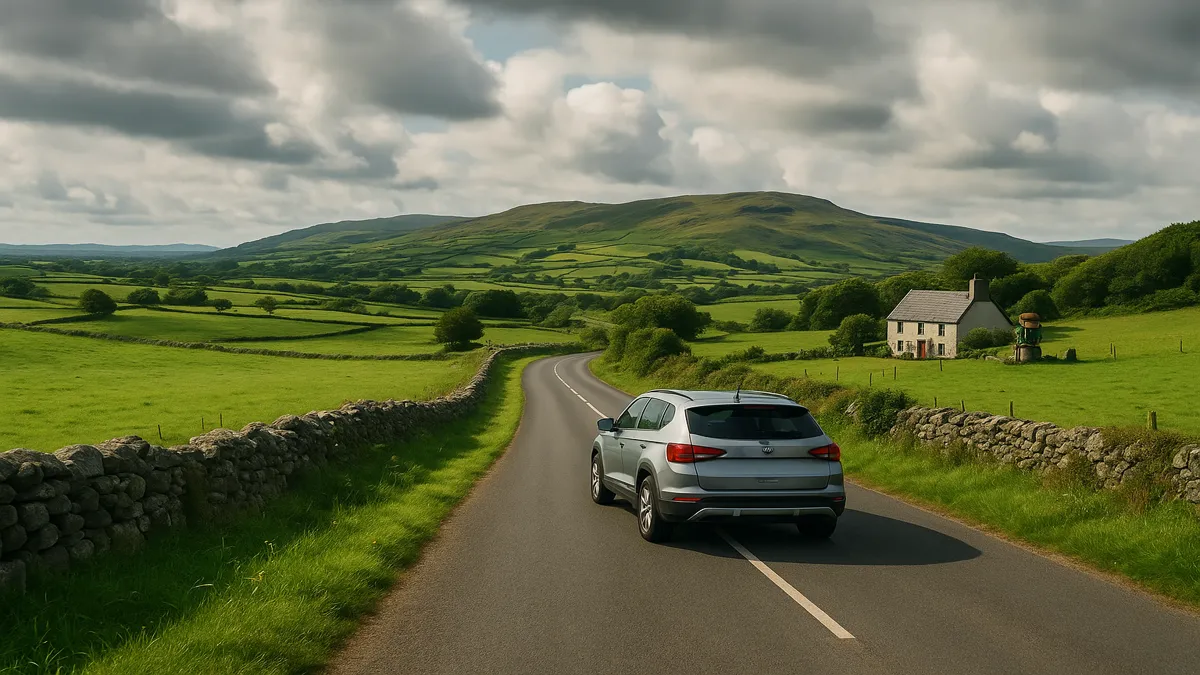
Driving in Ireland: The Ultimate Freedom (Left-Hand Drive & Narrow Roads)
- Pros: Offers unparalleled flexibility to explore remote areas, charming villages, and scenic routes like the Wild Atlantic Way at your own pace. Essential for reaching many natural attractions.
- Cons: Driving is on the **left side of the road**, which can be a challenge for those accustomed to right-hand drive. Roads in rural areas can be very narrow, winding, and sometimes lack shoulders. Fuel is expensive. [7]
- Tips:
- Automatic vs. Manual: If you’re not comfortable with a manual transmission on the left, opt for an automatic.
- Insurance: Get full coverage, including excess waiver.
- International Driving Permit (IDP): Recommended if your license is not in English.
- Navigation: Use Google Maps or a GPS. Download offline maps.
- Patience: Take your time, especially on narrow roads. Pull over to let others pass.
Trains: Scenic & Comfortable
- Pros: Irish Rail (Iarnród Éireann) connects major cities like Dublin, Cork, Galway, and Belfast. Trains are comfortable, offer scenic views, and avoid traffic.
- Cons: Limited network outside major routes, can be expensive if not booked in advance.
- Booking: Book tickets online at Irish Rail’s website for the best fares.
Ready to book your train tickets hassle-free?
Search routes and compare prices on Trainline – your one-stop platform for rail travel across Europe.
Buses & Coaches: Affordable & Extensive
- Pros: Bus Éireann operates an extensive network covering most towns and villages not served by rail. Generally more affordable than trains. Private coach companies (e.g., Aircoach, Dublin Express) offer direct airport transfers.
- Cons: Slower than trains, can be affected by traffic.
- Booking: Tickets can be bought online or at bus stations.
Flights: For Long Distances
- Pros: Useful for traveling between Ireland and the UK, or for connecting to Europe. Domestic flights within Ireland are rare due to the country’s small size.
- Main Airports: Dublin Airport (DUB) is the largest, followed by Cork (ORK) and Shannon (SNN).
Looking for the best hotel or flight deals?
Plan your trip with ease using the Expedia search tool below. From charming boutique hotels to luxury resorts, this widget helps you compare top options in seconds — flights included!
City Public Transport
- Dublin: Extensive bus network, Luas (tram system), and DART (commuter rail). Use a Leap Card for convenience and savings.
- Other Cities: Most cities have good local bus networks.
7. How Much Does a Trip to Ireland Cost?
Ireland can be as expensive or as affordable as you make it. Dublin, in particular, is known for being one of Europe’s pricier capitals, but venturing outside the capital can significantly reduce your daily expenses. Here’s a breakdown of typical costs for 2025:
Daily Cost Estimates (Per Person)
- Budget Traveler: €50-€90 / $55-100 USD per day
- Accommodation: Hostel dorms, budget guesthouses.
- Food: Supermarket picnics, street food, cooking some meals, pub lunches.
- Transport: Public transport, walking.
- Activities: Free museums, parks, walking tours.
- Mid-Range Traveler: €90-€200 / $100-220 USD per day
- Accommodation: Mid-range hotels, B&Bs, private hostel rooms.
- Food: Mix of casual restaurants, cafes, some pub dinners.
- Transport: Public transport, occasional taxis, some inter-city trains/buses.
- Activities: Paid attractions, some tours.
- Luxury Traveler: €200-€400+ / $220-440+ USD per day
- Accommodation: Luxury hotels, boutique hotels.
- Food: Fine dining, frequent restaurant meals.
- Transport: Taxis, private transfers, car rental.
- Activities: Exclusive tours, private guides, high-end experiences.
Cost Breakdown (General Estimates)
- Accommodation:
- Hostel Dorm: €20-€40 per night
- Budget Hotel/Guesthouse: €60-€120 per night
- Mid-Range Hotel: €120-€250 per night
- Luxury Hotel: €250+ per night
- Food:
- Supermarket/Picnic: €5-€15 per meal
- Casual Pub Meal/Cafe: €15-€25 per meal
- Mid-Range Restaurant: €25-€40 per meal
- Fine Dining: €50+ per meal
- Transportation (per day, average):
- Local Public Transport (cities): €8-€15 (e.g., Leap Card in Dublin)
- Intercity Trains/Buses: Varies greatly depending on distance and booking in advance. A long-distance ticket can range from €15-€50+.
- Activities & Sightseeing (per day, average):
- Budget (Free museums, walking tours, parks): €0-€20
- Mid-Range (Paid attractions, day tours): €20-€50
- High-End (Special experiences, theatre tickets): €50+
Money-Saving Tips:
- Free Attractions: Many of Ireland’s best museums and galleries (e.g., National Museum of Ireland, National Gallery of Ireland) offer free entry to their permanent collections.
- Pub Lunches: Often offer great value for money compared to dinner. Look for ‘lunch specials’.
- Leap Card in Dublin: Use a Leap Card for the cheapest fares on Dublin’s public transport. Daily caps apply. [40]
- Walk Everywhere: Ireland’s cities are incredibly walkable. Save money and discover hidden gems by exploring on foot.
- Cook Your Own Meals: If staying in accommodation with kitchen facilities, buying groceries from supermarkets (Tesco, SuperValu, Lidl, Aldi) can significantly cut down food costs.
- Book Transport in Advance: ‘Advance’ tickets for trains and buses are much cheaper than buying on the day.
- Consider a Heritage Card: If you plan to visit many state-managed heritage sites, a Heritage Card can offer good value.
8. Must-Try Foods and Cultural Delights
Ireland’s culinary scene has evolved significantly, offering much more than just potatoes! Prepare your taste buds for hearty, comforting dishes, and immerse yourself in the country’s rich cultural traditions.
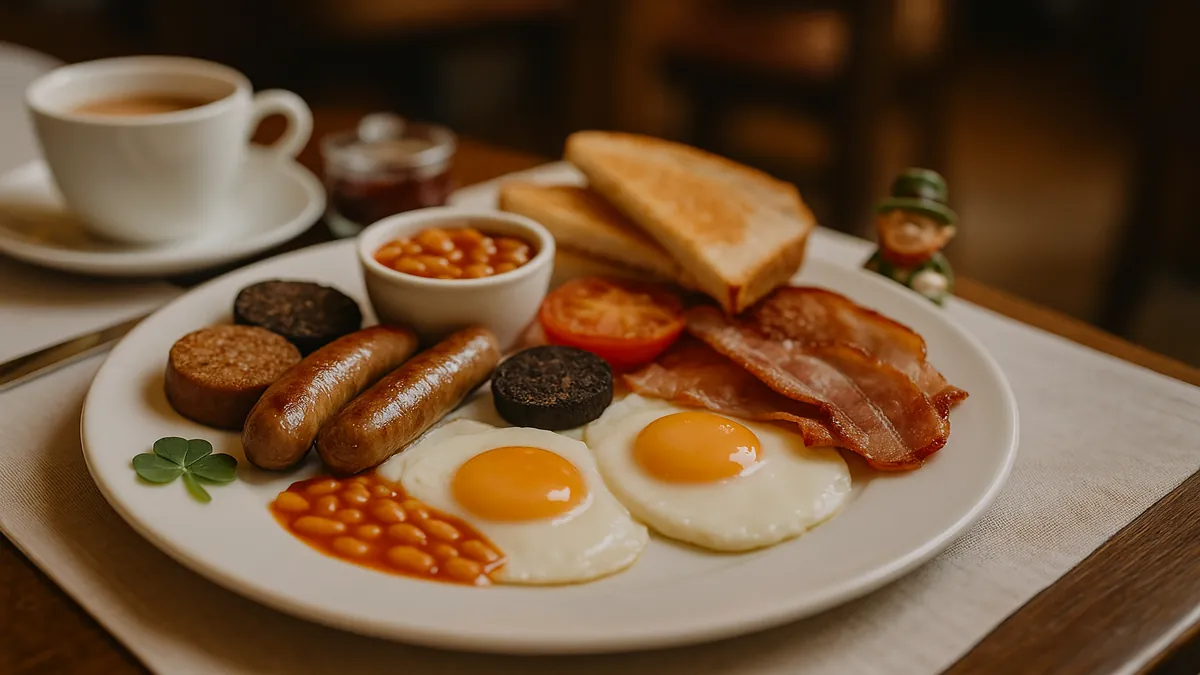
Iconic Irish Dishes
- Full Irish Breakfast: A hearty start to the day with bacon, sausage, eggs, black pudding, white pudding, beans, and toast.
- Irish Stew: A comforting classic made with lamb or beef, potatoes, carrots, and onions. Perfect for a chilly day.
- Boxty: A traditional Irish potato pancake, often served with a variety of fillings.
- Colcannon/Champ: Creamy mashed potatoes mixed with cabbage or kale (Colcannon) or spring onions (Champ).
- Fish and Chips: A staple, especially in coastal towns. Enjoy it wrapped in paper from a local ‘chipper’.
- Soda Bread: A traditional quick bread, often served with butter and jam.
- Guinness: The iconic stout, best enjoyed fresh from a pub tap in Ireland.
- Irish Whiskey: Explore the world of Irish whiskey with a distillery tour and tasting.
The Pub Culture: More Than Just a Drink
The Irish pub is the heart of local community life. It’s a place for socializing, storytelling, and enjoying live music. Don’t expect table service for drinks; order at the bar. It’s common to buy rounds for your group.
Traditional Irish Music & Dance
Seek out a “trad session” in a local pub, especially in places like Galway, Doolin, or Temple Bar in Dublin. These informal gatherings of musicians playing traditional tunes are a highlight of any trip. You might even see some impromptu Irish dancing!
Cultural Etiquette & Local Customs
- The Craic: This untranslatable Irish term refers to a unique blend of fun, conversation, and entertainment. Embrace it!
- Politeness: “Please,” “thank you,” and “sorry” are used frequently. Politeness and a friendly demeanor go a long way.
- Personal Space: Generally, Irish people are friendly and open, but respect personal space.
- Tipping: Similar to the UK, 10-15% in restaurants for good service if a service charge isn’t already included. Tipping in pubs is not customary unless for exceptional service.
9. Staying Safe in Ireland
Ireland is generally a safe country for tourists, but like any popular destination, it’s essential to be aware of your surroundings and take precautions.
General Safety Tips
- Be Aware of Your Surroundings: Especially in crowded areas like train stations, popular attractions, and public transport.
- Protect Your Valuables: Use a cross-body bag or money belt. Avoid flashing expensive jewelry or electronics.
- Walk with Confidence: Look like you know where you’re going, even if you don’t.
- Avoid Isolated Areas at Night: Stick to well-lit, populated streets.
- Trust Your Gut: If a situation feels off, remove yourself from it.
Dealing with Pickpockets & Scams
Pickpocketing is the most common crime affecting tourists, particularly in busy areas of Dublin (e.g., Grafton Street, Temple Bar, O’Connell Street). Risks include bag snatching and petty theft. They often target rental cars, especially in Dublin and tourist areas. Here’s how to minimize your risk:
- Keep Wallets in Front Pockets: Or use a money belt hidden under your clothes.
- Secure Bags: Keep zippers closed and bags in front of you, especially on crowded buses or trains.
- Be Wary of Distractions: Pickpockets often create diversions (e.g., asking for directions, dropping something) to distract you.
- Don’t Carry All Your Cash: Only carry what you need for the day. Leave extra cash and important documents in a hotel safe.
- Credit Card Fraud/ATM Scams: These are becoming more common. Check ATMs before use and don’t use machines that look unusual.
Emergency Numbers
- The universal emergency number in Ireland (and throughout the EU) is 112 for police, ambulance, and fire services. You can also dial 999.
10. Solo Travel in Ireland
Ireland is an incredibly rewarding destination for solo travelers, offering freedom, flexibility, and endless opportunities for self-discovery. Many Irish cities and towns are safe and easy to navigate alone, with a welcoming culture.
- Safety First:
- Research Accommodation: Choose well-reviewed hostels or hotels in safe neighborhoods. Many hostels offer female-only dorms.
- Be Aware of Your Surroundings: Especially at night or in crowded areas. Trust your instincts.
- Share Your Itinerary: Let a friend or family member know your plans.
- Emergency Contacts: Keep local emergency numbers (112/999) and your embassy’s contact info handy.
- Meeting People:
- Hostels: Stay in hostels with good common areas and social events.
- Walking Tours: A great way to see a city and meet fellow travelers. Many cities offer free walking tours.
- Pubs: Engage in conversation at a local pub. The Irish are known for their friendliness.
- Activities: Join group tours, cooking classes, or hiking groups to meet like-minded individuals.
- Embrace Solitude: Enjoy the freedom of setting your own pace, lingering at a historical site, or simply people-watching with a pint of Guinness.
- Budgeting for One: Be mindful of single supplements for tours or accommodation. Hostels and self-catering apartments can be more budget-friendly.
11. Traveling Ireland with Family or as a Senior
Ireland caters wonderfully to all ages, but specific considerations can enhance trips for families and senior travelers.
Traveling with Family
- Kid-Friendly Attractions: Ireland offers numerous castles, interactive museums, and beautiful parks. Many coastal towns and beaches are perfect for family-friendly holidays.
- Accommodation: Apartments or hotels with family rooms/suites often provide more space and convenience. Consider places with kitchenettes to prepare some meals. Resorts often have kids’ clubs and pools.
- Transportation: If driving, ensure car seats are appropriate. For younger children, factor in stroller accessibility on public transport (Dublin’s Luas and DART are generally good).
- Pacing: Don’t overschedule. Allow for downtime, playgrounds, and spontaneous exploration. Remember that meal times can be later than in some countries.
- Packing: Bring familiar snacks, comfort items, and any necessary medications. Sun protection and waterproof gear are crucial for kids.
Traveling as a Senior
- Accessibility: Research accessibility for attractions and public transport, especially if mobility is a concern. Many ancient sites involve uneven terrain and stairs. Some modern museums and hotels are more accessible.
- Pacing: Opt for a slower pace. Choose fewer destinations and spend more time in each to avoid rushing. Consider guided tours that handle logistics. [12, 28]
- Discounts: Many museums, attractions, and public transport systems offer senior discounts. Always ask!
- Medical Considerations: Carry all necessary medications in their original packaging. Consider travel insurance that covers pre-existing conditions.
- Comfort: Prioritize comfortable shoes and easy-to-access accommodation. Consider coach tours or cruises if you prefer less movement and organized travel.
12. Digital Nomads in Ireland
Ireland is emerging as an attractive destination for digital nomads, offering a unique blend of rich culture, a strong economy, and a growing number of cities with vibrant remote work communities. While not as warm as Southern Europe, its welcoming atmosphere and English-speaking environment are big draws.
- Visa Considerations: Ireland does not currently have a specific Digital Nomad Visa. Non-EU citizens typically need to enter on a tourist visa (if applicable) and cannot work for an Irish company. For longer stays, options like the Critical Skills Employment Permit or General Employment Permit might be considered, but these are tied to Irish employment. Always check the official Irish Immigration website for the latest requirements.
- Best Cities for Nomads:
- Dublin: Capital city energy, diverse opportunities, good transport, numerous co-working spaces, and a large expat community. However, it’s expensive.
- Cork: Vibrant and more affordable than Dublin, with a growing tech scene and a strong sense of community.
- Galway: Bohemian and artistic, with a lively atmosphere and a good quality of life, though fewer dedicated co-working spaces.
- Limerick: An emerging hub with a lower cost of living and a friendly atmosphere.
- Connectivity: Ireland boasts excellent internet infrastructure, especially in urban areas. eSIMs are a convenient option for staying connected.
- Cost of Living: Varies significantly. Dublin is one of the most expensive cities in Europe. Cork and Galway are more affordable, and smaller towns offer even better value.
- Co-working Spaces: Abundant in major cities, offering dedicated workspaces and networking opportunities.
13. Essential Packing List in our Ireland Travel Guide
Packing for Ireland means preparing for all seasons, sometimes in one day! Layers are your best friend. Here’s a comprehensive list to ensure you’re ready for anything the Emerald Isle throws at you.
Clothing
- Waterproof Jacket: Non-negotiable! Even in summer, rain showers are common. Look for something breathable.
- Layers: T-shirts, long-sleeved tops, sweaters/fleeces. You’ll be adding and removing layers throughout the day.
- Comfortable Walking Shoes: You’ll be doing a lot of walking on uneven terrain, cobblestones, and potentially wet paths. Waterproof shoes are a bonus.
- Warm Socks: Wool or synthetic socks are great for keeping feet dry and warm.
- Jeans/Comfortable Trousers: Avoid cotton if you plan on serious hiking, as it stays wet.
- Hat & Gloves: Especially for spring, autumn, and winter, or if you’re sensitive to cold.
- Dressier Outfit (Optional): If you plan on fine dining or a night out in Dublin.
Essentials & Accessories
- Universal Travel Adapter: Ireland uses Type G plugs (the same as the UK).
- Portable Power Bank: For charging devices on the go.
- Reusable Water Bottle: Stay hydrated and reduce plastic waste.
- Small Umbrella: Compact and useful for light showers.
- Daypack: For daily excursions, carrying water, snacks, and extra layers.
- First-Aid Kit: For minor cuts, headaches, and any personal medications.
- Sunscreen & Sunglasses: Yes, even in Ireland! The sun can be strong when it’s out.
- Copies of Important Documents: Keep digital and physical copies of your passport, travel insurance, and flight/accommodation bookings.
As an Amazon Associate, we earn from qualifying purchases.
14. FAQs for First-Timers
Here are some frequently asked questions to help ease any remaining concerns about your first trip to Ireland.
Is Ireland expensive to visit?
Ireland can be expensive, especially Dublin. However, it’s possible to travel on a budget by staying in hostels, eating pub lunches, utilizing free attractions, and using public transport. Venturing outside Dublin often offers better value.
Do I need a visa for Ireland in 2025?
For most nationalities (e.g., US, Canadian, Australian, EU citizens), a visa is not required for tourist stays up to 90 days. The ETIAS system is not expected to be in effect for 2025. Always check official government websites for the latest requirements based on your nationality.
What’s the best way to get around Ireland?
For flexibility and to explore rural areas, renting a car is highly recommended, despite driving on the left. For city-to-city travel, trains and buses are efficient. Public transport is good within major cities.
What should I pack for Ireland?
Layers are key! A waterproof jacket, comfortable walking shoes, and warm clothing are essential, regardless of the season. An adapter for Type G plugs is also necessary.
Is it safe to travel solo in Ireland?
Yes, Ireland is generally very safe for solo travelers. Use common sense precautions, especially at night in urban areas, and be aware of your surroundings. Hostels are great for meeting other travelers.
Can I use my credit card everywhere?
Credit and debit cards are widely accepted, especially Visa and Mastercard. However, it’s wise to carry some cash for smaller purchases, local markets, or in more remote areas.
What’s the currency in Ireland?
The currency in the Republic of Ireland is the Euro (€). In Northern Ireland (e.g., Belfast), the currency is the British Pound (£).
What’s the food like in Ireland?
Irish food is hearty and delicious! Expect traditional dishes like Irish stew, full Irish breakfast, and fresh seafood. The pub scene is central to Irish culture, offering both food and entertainment.
15. What’s Next? More Guides to Explore
Your Irish adventure awaits! We hope this comprehensive guide has equipped you with all the essential information to plan an unforgettable trip to the Emerald Isle. From the bustling streets of Dublin to the serene beauty of the Wild Atlantic Way, Ireland promises a journey filled with magic and memories.
Happy travels, and enjoy your unforgettable journey through Ireland!
Related Articles to Inspire Your Next Adventure:
🇪🇺 Western Europe
🇪🇺 Southern Europe
🇪🇺 Northern Europe
🇪🇺 Central Europe
🇪🇺 Eastern Europe & Baltics
🌍 Continental Overview
References:
European Union. (2025, April 14). Revised timeline for the EES and ETIAS. Retrieved from Official EU Site
